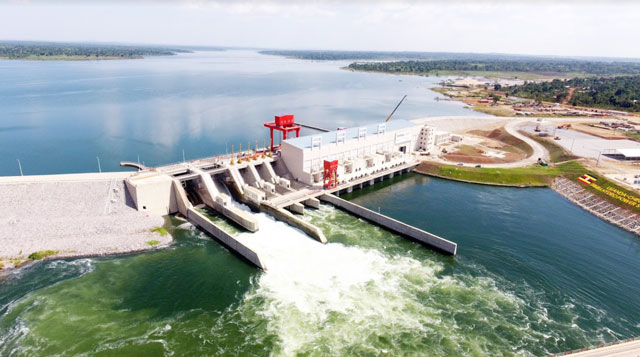
River Nile countries push for an interconnected power grid
SPECIAL FEATURE | ESPOIR IRADUKUNDA & RONALD MUSOKE | It is 9am in downtown Bujumbura— Burundi’s commercial city, and the alleys are already crowded with buyers and sellers haggling noisily over prices of merchandise. They must shout to be heard because of the noise from the portable generators rattling in corners of shops.
Pierre Ndayizeye, a shopkeeper at Ideal Gallery, says the electricity from the national power grid is unreliable. Today, it has been off since 6am.
“I can spend three days without power. REGIDESO tells us that the issue is being sorted out but they lie to us,” he says, his face barely hiding the frustration.
Ndayizeye says REGIDESO, Burundi’s public utility company in charge of production and distribution of water and electricity, cannot supply enough power nationwide. “Even the little power we have is weak. Our appliances and equipment have been burnt due to unstable electricity supply,” he says.
Ndayizeye adds that even with its short-supply, the grid power costs more than most Burundians can afford. Owners of high rise buildings, such as the seven-storey Premium House in Bujumbura city centre, have put their lifts out of service citing safety reasons in the event of a power outage.
To survive, Ndayizeye and other traders and residents resort to portable diesel generators. But powering them is costly because the fuel that runs them is quite expensive.
Some residents use solar power panels. These devices which absorb sun rays and convert them into electricity are common on rooftops of business and residential premises.
Fabien Bakundukize, a resident of Kayosha, a suburb in the southern outskirts of Bujumbura, says the electricity situation in the city has worsened and REGIDESO no longer publishes the schedule of outages for users.
“When you know when power is to go off, you organize your work accordingly. These days I witness power blackouts four to five times during day time and one long power cut from 10pm up to around 5am in the morning.”
To cope with the situation, Bakundukize has invested in portable rechargeable lamps and solar systems specifically for his school-going children. “Whenever there is a power outage, the children look on desperately; especially when they are busy with examinations,” he says.
Statistics from the National Bank of Burundi (BRB) also show that the country has only 39 MW of installed capacity, of which 95% is hydropower-based.
No wonder, the country’s access to electricity (11.7% as of 2020 World Bank data) is one of the lowest in Sub-Saharan Africa, even though the country’s cost of power generation (US$0.062) per kilowatt hour according to the African Development Bank is considered relatively lower compared to its neighbours.
A 2015 government of Burundi report shows that the country’s hydropower potential is 1,700 megawatts although only 300 megawatts is economically viable.
Jean Albert Manigomba, the Director General of REGIDESO, says Burundi’s long standing power blackouts will be solved ‘once and for all’ if all government hydropower projects lined up for construction come online by 2027. He says if about 200 megawatts come on board, the whole country should be electrified by 2030.
Burundi looks to regional electricity
In the meantime, Manigomba says Burundi’s energy poverty is expected to end soon, thanks to regional electricity sharing initiatives that have been spearheaded by the Nile Equatorial Lakes Subsidiary Action Programme (NELSAP).
NELSAP is one of the two investment arms of the Nile Basin Initiative (NBI), a regional body that brings together 11 countries that share the River Nile. These include Burundi, DR Congo, Egypt, Ethiopia, Kenya, Rwanda, South Sudan, Sudan, Tanzania and Uganda. Eritrea has “observer” status in this regional body.
NELSAP’s project targets improving access to electricity in the upper Nile Basin countries (Burundi, DR Congo, Kenya, Rwanda, Tanzania and Uganda) through increased cross-border sharing of electricity.
Over the last decade, NELSAP has been playing a catalytic role in coordinating the technical expertise from the regional governments and their electricity companies to carry out studies and develop regional guidelines for interconnecting the national grids into a single pool.
In collaboration with international financial institutions such as the African Development Bank (AfDB), Germany’s KfW, Japan’s JICA, and America’s USAID, the Nile Basin Initiative (NELSAP’s parent agency) has been working on hydropower infrastructure projects like the Rusumo Falls Hydropower Project and an inter-grid electricity system within the Nile Equatorial Lakes states.
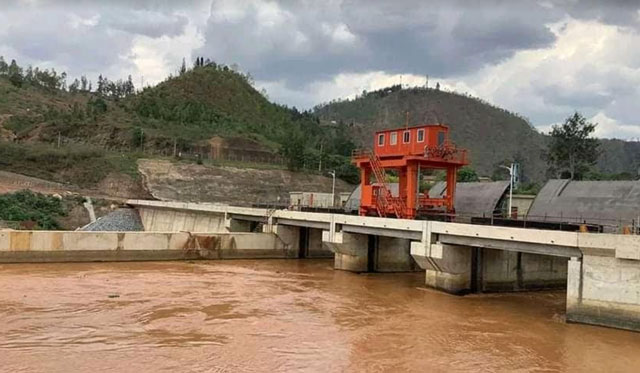
If executed well, experts say, the interconnected countries have the potential to deliver reliable and affordable electricity to consumers like the shopkeepers of Bujumbura.
Manigomba says he is looking at projects like the Rusumo Falls Hydropower Project, which is set to interconnect Burundi, Rwanda and Tanzania through a mutually-owned Rusumo Power Company.
Rusumo Falls on River Kagera is strategically located along the shared border of Rwanda and Tanzania and its power production facilities and substations are respectively located at the southern and northern banks of the river.
According to engineers from the Nile Basin Initiative (NBI), the 80MW hydropower station will solve regional power shortages through interconnection.
Alloyce Oduor, the power engineer in charge of interconnection and technical lead at NELSAP-Coordination Unit, says of the 80 megawatts to be generated at Rusumo, Burundi, Rwanda and Tanzania are each expected to get 26.6 megawatts.
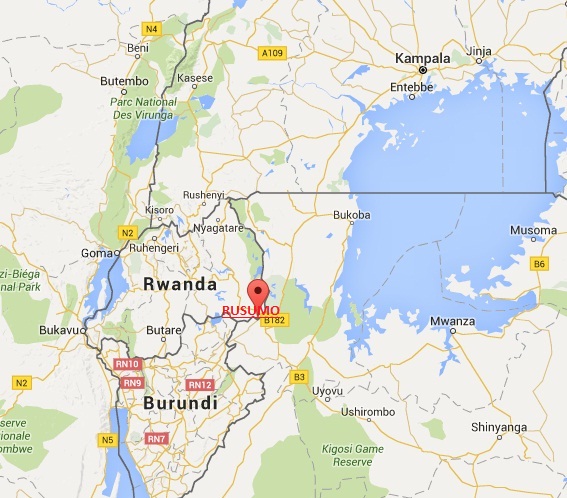
Enthusiasm in eastern DR Congo
Regional electricity interconnection is already causing excitement in Uvira, a small city in the South Kivu Province in eastern DR Congo— the newest country in the East African Community.
Papy Kabemba Bisimwa, a local leader, says electricity has for a long time remained the preserve of the well-to-do.
“It is not for everyone,” he says, “most households use batteries and small solar panels to light their houses, but they are quite expensive due to heavy taxes at the DR Congo-Burundi border.”
Bisimwa says he hopes Uvira’s electricity situation will change soon once they get connected to the regional power grid.
“I hope I will pay little for electricity compared to what I pay today,” he says.
Bisimwa points at the ongoing upgrade of the 147-megawatt hydropower dam along River Ruzizi which will supply electricity to DR Congo, Rwanda and Burundi.
Bisimwa’s cousin, Byarurema, a 31-year-old farmer, who suffers whenever rains fail is equally excited.
“My legumes hardly get water in the dry season. I have to pay people to fetch around 2,000 litres of water a day, but with this power project, I hope to invest in a water pump, irrigate my farmland and make profit,” he says.
According to a project brief, once completed in 2026, Burundi’s total electricity capacity will double as it will tap from this electricity pool. Rwanda and DR Congo will also benefit from this project. Construction of the power house has been finalized and the three countries have tested their capacity on their substations including the first one for Burundi located in Gitega.
“What is now being worked on are substations to facilitate the extension of electricity to Ngozi and Bujumbura cities and farther away in eastern DR Congo,” says Oduor, “Eventually, all power stations will get interconnected into one pool and synchronized to come up with a regional grid network.”
The Uganda-Rwanda link
Odour says the Rwanda, Burundi, DR Congo system will eventually be connected to the Kenya-Uganda component which has been in place since the 1950s.
Oduor says the circuit will be completed when Tanzania and Kenya link up their national grids and Tanzania links up with that of Burundi and Rwanda. As of March 2022, one of the major missing links to activate the system has been the Uganda-Rwanda section. This explains why both the Rwandan and Ugandan governments have been working for the better part of a decade to connect the two national grids.
“If we connect Mbarara (Uganda) to Shango (Rwanda), it means that all the five countries will have been connected and synchronized,” says Oduor. He adds: “When the interconnection to Shango power substation is ready, the grid network will be very stable (systems stability).”
The Mbarara substation is the main terminal station and it connects to Shango through Mirama sub-station in southern Uganda.
“We are at the moment aligning or fine-tuning all these components and we envisage that we will be able to fully complete it and close the line,” Oduor explains.
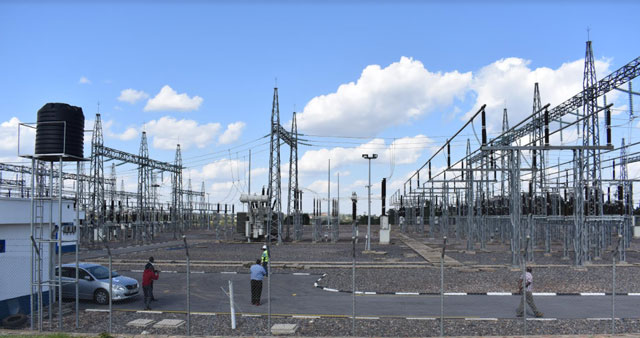
Oduor says regional power grid interconnection is important because a power system is like any moving machine. It has got load, it has got its speed and has got its breakdown level.
“A weak network when it is subjected to a fault collapses easily but when you interconnect it, it becomes strong, meaning it is a big machine. If you interconnect again, it becomes much stronger.”
“This will enhance regional power trading and more importantly, it will avail emergency electricity support as a solution to blackouts. If one station fails, another will generate the time to fix it, therefore, grant regional power system sustainability.”
To put his point into perspective, Oduor recalls the 2020 incident at the generation plant in Jinja, Uganda, when the country suffered power outage due to two “moving islands” of water hyacinth and papyrus blocking the intake of the Nalubaale Power Station (former Owen Falls Dam). Oduor says restoration was easy because of Uganda’s interconnection with the Kenyan system.
Oduor says Kenya also registers a lot of disturbance on its grid but the regional economic powerhouse benefits from being connected to its neighbour’s grid.
Uganda’s growing power supply
The regional power interconnection programme comes at a time when Uganda has been ramping up its hydropower portfolio over the last two-and–half decades. Until 1997, Uganda had one major hydropower station—Nalubaale Power Station which was built in 1954.
But, at the turn of the millennium, the government embarked on an ambitious plan to exploit its hydropower potential on River Nile to ramp up supply. Four hydropower dams have been constructed and today, the country boasts about 1,270 MW of electricity supply.
The government is hoping to push this to about 1,300 megawatts by the end of 2023, according to the 2021 UEGCL annual report.
From the 68-year-old Nalubaale power station, just 800 metres towards the eastern banks of the river, is the 200 megawatts Kiira Hydropower station, which was switched on in 2000.
Seven years later, work began on the 250 megawatts Bujagali hydropower station; the third power station located downstream the Nile, still in Jinja. Despite protests from environmentalists and local cultural leaders, the dam was built and commissioned in 2012.
About 40km farther downstream from Bujagali power station is the 183MW Isimba Hydro Power Station, commissioned in March 2019. Farther downstream in the central northern district of Kiryandongo is the 600MW Karuma Hydropower Station, the biggest in Uganda that is nearing commissioning. The commissioning of Karuma will see Uganda’s hydropower generation capacity reach about 2,000 MW.
This power will then be evacuated from six step-up transformers to the national grid through three major transmission lines. But it is the western axis (the 400Kv Karuma – Kawanda-Masaka-Mbarara line) that is probably the most important to complete the regional electricity grid interconnection to Rwanda.
There are already noticeable overhead electricity lines running along huge steel pylons cutting through wetlands and skirting hills and valleys through Kampala, Mpigi, Mityana, Lwengo, Masaka and Mbarara.
At Mbarara city, the substation has two 220Kv line bays to interconnect with the Rwanda network at Shango via Mirama Hills in the southern border district of Ntungamo. The Shango substation was completed and inaugurated in December 2019, and so was the Mirama Hills substation which has been there since 2018.
Pamela Byoruganda, the Principal Public Relations Officer at Uganda Electricity Transmission Company Ltd (UETCL) says both Uganda and Rwanda are working on configuring the electricity lines to ensure that they communicate.
Challenges persist
Uganda still has one of the lowest electrification rates in the world. Despite significant efforts over the last 20 years to electrify the country, 57% of the population has access to power (national grid and solar).
However, even when power is now available in the country, many communities, homes and businesses still struggle to have access to electricity due to expensive grid connection fees including high house wiring costs of US$165 in 2018.
Stephen Ababo, a businessman in the northwestern city of Arua, says he is disappointed at the intermittent power supply in the West Nile region. Like some Ugandans, he is not enthusiastic about Uganda supplying the regional electricity grid before satisfying local demand. In West Nile, electricity access currently stands at 39% (both electricity grid and solar).
Ababo says in Arua city, the power generated by a local concessionaire known as WENRECO is not enough. He says of the 3.5MW generated to supply the city, 1.7MW is taken by one tobacco factory alone.
“We need power for development, power is the centre for development; once we have power, the status of the West Nile region will change due to its advantage it enjoys being close to the Democratic Republic of Congo (DRC), South Sudan and the Central African Republic,” he says.
Ababo’s sentiments are shared by William Obulejo Butti, the Managing Director of the Desert Date Company, which manufactures date oil from the Balanites Eagyptica trees. When we spoke to Butti, he said he has lost close to US$11,000 due to unreliable electricity in West Nile.
He says he has an agreement to supply 42 litres of the oil in the USA and Italian markets to manufacture premium cosmetics, but he has reneged on the contract because of unnecessary load shedding. He has been forced to relocate the oil pressing machine to Kampala.
Lucrative venture
Despite reservations from Ugandan manufacturers, electricity trading is not a new phenomenon, and it looks like it will even be more lucrative in future.
According to a 2019 report by the Energy Charter Secretariat, energy access remains an overarching challenge in sub-Saharan Africa, where electricity access is on average 35% in urban areas and only 19% in rural areas.
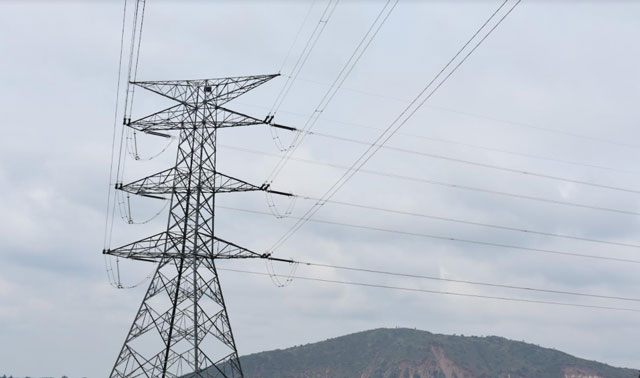
The region also faces challenges in terms of poorly planned cities and scattered settlements that hinder the permeation of energy infrastructure, thus making it difficult for the region to become a destination for efficient energy markets.
Within the Nile Basin, electricity consumption is still among the lowest in the world yet River Nile presents a lot of hydropower generation potential. According to various reports, only 19% of the Nile Basin’s hydropower potential has been developed.
The same reports say if countries within the Nile Basin are going to meet SDG 7.1 which relates to universal access to affordable, reliable and modern energy by 2030, production of electricity at a relatively low cost will be important. So will be their ability to wean themselves off the River Nile waters and consider other alternative energy sources.
A regional interconnected power grid would also allow for competitive consumer rates. In the longer run, it is hoped that the project will foster social and economic development while minimizing adverse environmental effects.
Biodiversity loss concerns
But, the idea of building more dams on River Nile and its tributaries often pits the government with conservationists who are usually worried about biodiversity losses along these rivers. Although the Ugandan law requires hydropower project developers to do thorough environmental impact assessments, environmental groups have never been satisfied by the safeguards often suggested by hydroelectricity dam developers.
The government has also in the past waived environmental offset agreements such as the Kalagala Falls Site which the International Development Agency/World Bank demanded in 2007 during negotiations for financing the construction of the Bujagali Hydropower Dam.
According to the Environmental and Social Impact addendum of the Isimba Hydropower project published in 2017, the government of Uganda and the International Development Association (IDA) signed the Bujagali Indemnity Agreement which was integral to the financing of the Bujagali Hydropower project.
The indemnity agreement required the government to set aside Kalagala Falls Site exclusively to protect its natural habitat and environmental and spiritual values in conformity with sound social and environmental standards to the IDA.
The government was also asked to conserve through a sustainable management programme and budget the present ecosystem of Mabira Central Forest Reserve and the Nile Bank Forest Reserve on the banks of Kalagala Falls.
But, the government went ahead to develop the Isimba Hydropower Project just 12km downstream of the Kalagala Falls Site. Environmentalists feared the inundation of the reservoir of Isimba hydropower plant would extend laterally and upstream to the Kalagala Falls Site, a development which would impact on some fish species, especially those which depend on oxygenated habitats.
Local fishermen were particularly worried about the impact of hydropower dams on the fisheries of the upper Victoria Nile, but these concerns were ignored, and in 2017, the government went ahead with its plans to develop Isimba Hydropower Station.
But if the environmental and local fishermen’s concerns at Isimba were somewhat ignored, those at the bigger Karuma hydropower station were handled perhaps more seriously. Karuma Hydropower Dam is partly located within Murchison Falls Protected Area, the largest protected area in the country.
That includes Karuma Wildlife Reserve. A baseline study on biodiversity in the project area done in 2010 found close to 285 plant species, 21 fish species, and 84 bird species including the Brown Snake Eagle, the Papyrus Gonolek, the Spot-flanked Barbet, White-headed Saw-wing, Grey-Capped Warbler, Golden-backed Weaver and Cardinal Quelea.
There were also 16 reptile species including the Nile crocodile and 13 amphibian species and 26 species of both small and large mammals recorded. The study found the elephant and hippos the only species considered vulnerable in the IUCN’s 2010 criteria.
In response, the power plant was built underground to limit the footprint on the surface and the structures have also been designed and constructed in a way to conserve the environment. The dam includes channels for fish which allows them to migrate. The project is also fenced to preserve the passage for hippos as they go out of the water in search of food on dry ground.
The dam’s tail race system, the access adits and surge chambers are actually located within the Karuma Wildlife Reserve but outside the Murchison Falls National Park. However, most of the project components such as the underground power house, the weir and the headrace are located outside the Murchison Falls National Park as well as the wildlife reserve area.
Patrick Angupale, the manager, health and safety at UEGCL says the national parastatal in charge of power generation continues to monitor all its power plants and it will continue doing so for the entire hydropower stations’ lifecycles.
Angupale adds: “At Isimba which has a reservoir, we continue monitoring the banks of the river and also look out for changes in the plant and animal life that are endemic to the area while at Karuma, UEGCL is aware about the fish spawning areas and management has deployed staff on the river to do regular boat rides as they monitor any changes in water life.”
Dr Gaspard Bikwemu, the NELSAP Environment Management Officer, is more philosophical about the interplay between aesthetics of rivers, biodiversity conservation and hydropower projects.
“You cannot bake an omelet without breaking an egg,” he said, when asked about the fact that the construction of the Rusumo Hydropower power station has negative implications for the Rusumo waterfalls (their disappearance) and the migration of some aquatic and terrestrial animal life endemic to the area.
But Mark Olokotum, a researcher and programme lead for the capture fisheries and biodiversity conservation programme at the National Fisheries Resources Research Institute (NaFIRRI) in Uganda does not entirely agree with Bikwemu.
He says much as hydroelectricity dams are critical to economic development of countries like Uganda and Burundi, there is need for strategic planning when it comes to the location of some of these dams.
Challenges of regional power grid
Meanwhile, Dickens Kamugisha, the executive director of the African Institute for Energy Governance (AFIEGO), a Kampala-based non-profit, says cross-border electricity trade which is being pushed by the NELSAP-CU may never succeed as long as national power sectors are weak.
Kamugisha says NELSAP projects are funded by donor agencies which does not bode well for the region. He says there is evidence that even if the target countries started generating 10,000 megawatts, at the prevailing tariffs versus poverty in countries like Uganda, the power access and consumption situation would not improve without fundamental reforms.
Kamugisha says the issue for many of these countries is not a problem of quantity but a problem of unaffordability caused by high tariff and poverty. He says despite the recent increase in Uganda’s hydropower generation capacity, the percentage of Ugandans connected to the grid is still low. Most of the population still relies on crude fossil energy such as firewood, charcoal, oil, etc to meet 90% of their energy needs.
***
This story has been produced in partnership with InfoNile with support from Code for Africa and funding from the JRS Biodiversity Foundation
 The Independent Uganda: You get the Truth we Pay the Price
The Independent Uganda: You get the Truth we Pay the Price




It will facilitate development of both rural and urban areas of Uganda